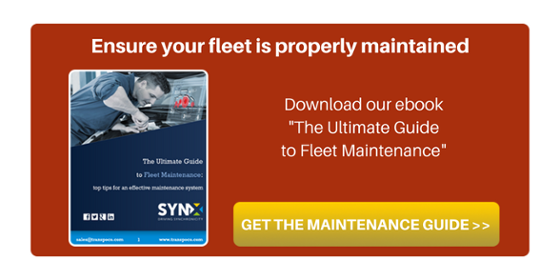
If you are reading this, you are probably more than aware just how essential vehicles are to your business—hence why M is for Maintenance in our A-Z of fleet management—and chances are a business could not function without them or at the very least some of your daily tasks would be impossible to complete. That’s why keeping your vehicles in sound running order through proper maintenance regimes ensures you have an efficient and healthy business. Not only are well-kept vehicles required to pass regular inspections, but they also help keep employees confident in their equipment. The alternative is an unreliable fleet that lets customers down, costs you money in repairs and alienates staff—something you hopefully want to avoid like the plague!
What is fleet maintenance?
Fleet maintenance is the process of keeping your vehicles operating in a good enough condition so that they are safe, reliable and can stay on the road longer. Developing a preventative maintenance program is an integral part of managing a fleet and helps businesses reduce operating costs and improve vehicle inspection outcomes, among other benefits.
What types of maintenance do we know?
In general, maintenance has two approaches: reactive and proactive. While reactive maintenance focuses on repairing an asset once failure occurs, proactive maintenance, on the other hand, focuses on avoiding repairs and asset failure through preventive strategies that anticipate possible issues (in some cases following recommendations from the manufacturer and establishing a routine series of checks) and predictive methods (complementary strategies based on a database of maintenance checks for those specific vehicles). Both reactive and proactive maintenance might seem to have advantages, but reactive maintenance, relating to minimal preparation, is not necessarily conducive to a positive outcome: downtime is often inconsistent and unpredictable; it is associated with inefficient use of labour and/or higher costs deriving from mechanical issues that could have been tackled more easily and cheaply earlier on or maybe avoided altogether.
Is it better to have a maintenance department or to outsource?
There is actually no answer to suit all types of fleet and business. Small fleets might through necessity have to rely on an external maintenance provider due to their size and available resources, while bigger fleets might find it better to have a structured maintenance department in-house. But nothing is written in black on white. The important thing is fleets are aware of the maintenance needed and of the responsibilities of providers or upon themselves in case they decide to outsource.
Which technological solutions can boost fleet maintenance?
Fleet maintenance today is no longer something relegated to a spreadsheet. The more modern fleet management software comes with an entire maintenance section, which has at least three very practical features:
- Scheduling—a maintenance calendar with alerts for servicing events and regular maintenance to be carried out;
- Vendors contacts—a system that records all of the relevant data of your maintenance providers and serves as a database;
- Vehicle checks—a real game changer if you manage a fleet, as you can so easily plan for vehicle inspection checks to be carried out by your driving staff via an app that stores all the relevant data for compliance and auditing purposes.



